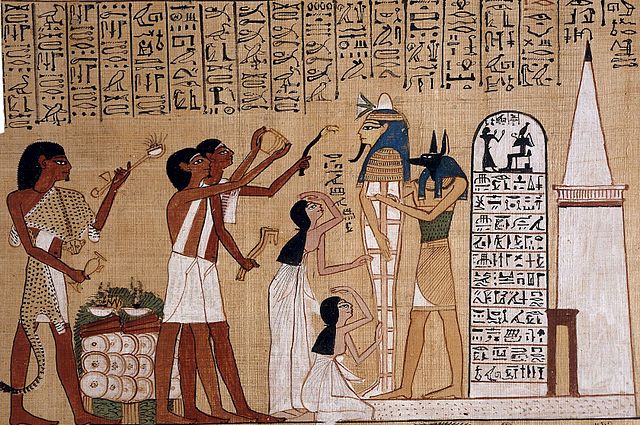The characteristic of cynocephaly, or cynocephalus, having the head of a canid, typically that of a dog or jackal, is a widely attested mythical phenomenon existing in many different forms and contexts. The literal meaning of cynocephaly is "dog-headedness"; however, that this refers to a human body with a dog head is implied. Such cynocephalics are known in mythology and legend from many parts of the world, including ancient Egypt, India, Greece, and China. Further mentions come from the medieval East and Europe. In modern popular culture cynocephalics are also encountered as characters in books, comics, and graphic novels. Cynocephaly is generally distinguished from lycanthropy (werewolfism) and dogs that can talk.
A cynocephalus. From the Nuremberg Chronicle (1493).
Cynocephali illustrated in the Kiev Psalter of 1397
Figure of the Eastern Zodiacal Dog as a dog headed and possibly tailed person. Rubbing from the tomb of Kim Yu-sin of Later Silla (now Korea).
Anubis, also known as Inpu, Inpw, Jnpw, or Anpu in Ancient Egyptian, is the god of funerary rites, protector of graves, and guide to the underworld, in ancient Egyptian religion, usually depicted as a canine or a man with a canine head.
Anubis attending the mummy of the deceased.
Portable shrine of Anubis, exposition in Paris, from the Tomb of Tutankhamun (KV62)
Hermanubis in the November panel of a Roman mosaic calendar from Sousse, Tunisia.
The Opening of the Mouth ceremony being performed on a mummy before the tomb. Anubis attending the mummy of the deceased. Extract from the Papyrus of Hunefer, a 19th-Dynasty Book of the Dead (c. 1300 BC)







